
DEPARTMENT OF MECHANICAL AND AEROSPACE ENGINEERING UNIVERSITY OF CENTRAL FLORIDA • ORLANDO, FL Biomedical Engineering Research 1
Biodesign Program in Rehabilitation Engineering.....................................4 Biomedical Acoustics Research Lab...............................................................6 Biomedical and Process Modeling Lab..........................................................8 Biomechanics, Rehabilitation and Interdisciplinary Neuroscience Lab..............................................................................................................................10 Cellular Biomechanics Lab.................................................................................12 Computational Biomechanics Lab..................................................................14 Computational Mechanics Lab.........................................................................16 NeuroMechanical Systems Lab........................................................................18 Rehabilitative Engineering and Assistive Device Lab............................20 CONTENTS
LAB DIRECTORY
Biodesign Program in Rehabilitation Engineering
Sudesha Pal
Associate Lecturer spal@ucf.edu
mae.ucf.edu/BPRE
Biomedical Acoustics Research Lab
Hansen Mansy
Associate Professor
hansen.mansy@ucf.edu
mae.ucf.edu/BARL
Biomedical and Process Modeling Lab
Olusegun Ilegbusi Professor
olusegun.ilegbusi@ucf.edu
mae.ucf.edu/Ilegbusi
BRaIN Lab
Helen Huang
Associate Professor hjhuang@ucf.edu
mae.ucf.edu/BRAIN
Cellular Biomechanics Lab
Robert Steward
Assistant Professor rstewardjr@ucf.edu
Computational Biomechanics Lab
Luigi Perotti
Assistant Professor luigi.perotti@ucf.edu
mae.ucf.edu/luigiperotti
Computational Mechanics Lab
Alain Kassab
Professor, Biomedical Engineering Program Director
alain.kassab@ucf.edu
mae.ucf.edu/
ComputationalMechanicsLab
NeuroMechanical Systems Lab
Qiushi Fu
Assistant Professor qiushi.fu@ucf.edu
REAL Lab
Hwan Choi
Assistant Professor hwan.choi@ucf.edu
mae.ucf.edu/REAL
3

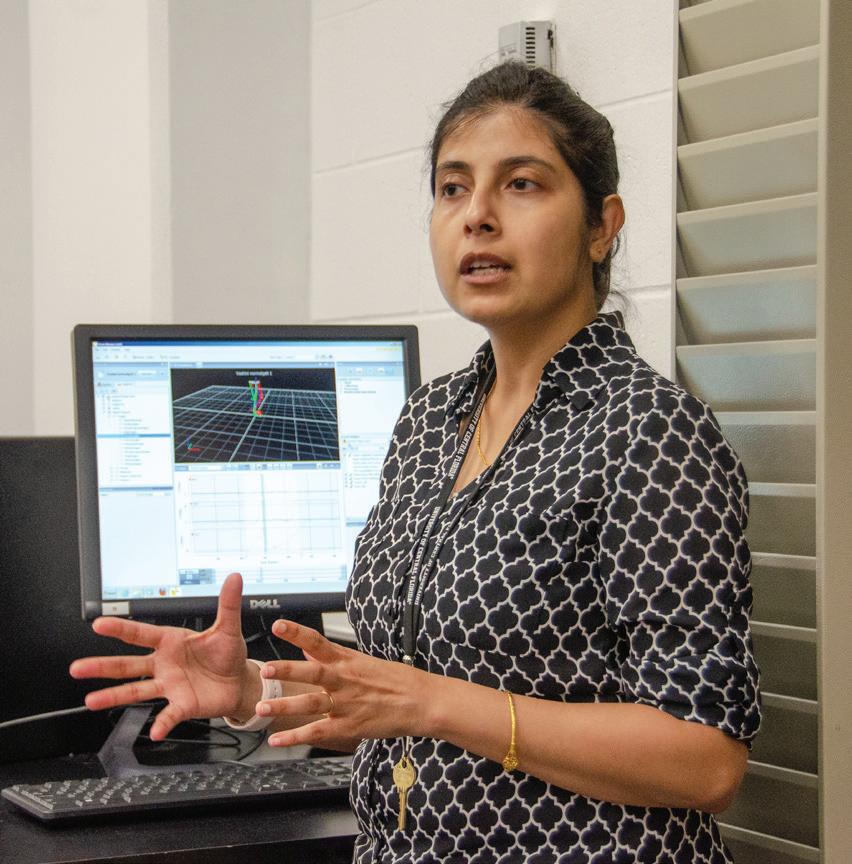

BPRE Program
Biodesign Program in Rehabilitation Engineering
Led by: Sudeshna Pal, Ph.D.
For Lecturer Sudeshna Pal, engineering education is just as important as engineering research. Through her Biodesign Program in Rehabilitation Engineering, undergraduate students receive a real-world education via a six-week paid internship at various rehabilitation centers, physical therapy clinics and prosthetic clinics across Central Florida.
By the end of the program, students have a better understanding of user needs in rehabilitative devices, can more effectively comunicate with clinicians and clinical staff, and have the ability to identify unmet patient needs that could potentially be addressed in future engineering courses.

The program is a collaboration between Pal and other UCF researchers, and is sponsored by the Eunice Kennedy Shriver National Institute of Child Health and Human Development of the National Institutes of Health.
Through a second NIH grant, Pal provides an educational training program for students interested in human motion design projects. Using a Vicon motion capture analysis system, which includes multiple cameras, sensors and arm markers, Pal and her students can perform a variety of studies related to biomechanics, including a comparison of the gait in individuals with prosthetics versus those without them.
5



BARL Lab
Biomedical Acoustics Research Lab
Led by: Hansen Mansy, Ph.D.
What if we could detect and monitor serious medical problems such as heart failure, vascular stenosis, elevated intracranial pressure, and small bowel obstructions just by listening to their vibro-acoustic emissions?

In the BARL Lab, Professor Hansen Mansy has spent the past 25 years investigating vibroacoustic phenomena in the human body and defining their time and frequency signatures. He combines knowledge in novel sensor design, computerized measurements, digital signal processing and machine learning, medical imaging and medical sciences to find the acoustic correlates of certain pathologies. This research has catalyzed the development of low-cost, noninvasive, portable technologies that are suitable for clinical use, home monitoring and telemedicine.
Mansy is developing several revolutionary devices, including one that can detect elevated intracranial pressure using high-sensitivity sensors that can measure the tiny pulsation of the tympanic membrane. Another device under development will be able to detect hip dysplasia in infants using vibro-acoustic stimulation and a cell phone. Through a $1.3 million grant from the National Institutes of Health, he is also creating a device that captures low-frequency chest wall vibrations, which contain signs of cardiac deterioration in heart failure patients. While this heart monitor would initially be used by healthcare providers, the long-term goal is to create a second-generation monitor that could be used for home monitoring. This aims to improve patients’ quality of life and reduce mortality and healthcare costs.
7



BPML Lab

Biomedical and Process Modeling Lab
Led by: Olusegun Ilegbusi, Ph.D.
Lung cancer treatment is difficult — not only for the patient, but for the doctor as well. The lungs are constantly in motion, so targeting tumors without killing healthy tissue is next to impossible.
But in the BPM Lab, Professor Olusegun Ilegbusi has found the solution to this problem. In collaboration with aerospace engineering Professor Jihua Gou and a UCF alumnus, Ilegbusi created a 3D lung simulator that can mimic patients’ breathing patterns. With this information, doctors can more precisely treat lung cancer patients, leading to fewer side effects and fewer rounds of treatment.
The trio of researchers also founded SegAna, a startup that develops the patented software for the simulator. SegAna has already been awarded a $250,000 grant from the National Science Foundation and has raised $4 million dollars from investors. The simulator has been tested at six different hospitals across the U.S. and recently received approval from the FDA.
Ilegbusi collaborates with UCF researchers to determine how tongue cancer affects patients’ ability to swallow and how the coughing mechanism is affected in individuals with throat cancer or Parkinson’s disease. He has also unlocked the key to stem cell generation by calculating the precise conditions needed for them to grow.
9



BRaIN Lab
Biomechanics, Rehabilitation and Interdisciplinary Neuroscience Lab
Led by: Helen Huang, Ph.D.
When we walk, we don’t think about what it takes to make us move – we just do it. But as we age, walking and maintaining a steady gait can become difficult.
At the BRaIN Lab, Associate Professor Helen Huang combines her engineering skills with human subject experiments to gain a better understanding of how the brain, muscles, and body work together to make humans move. The motivation behind her research is the belief that studying brain processes as we move is crucial for understanding how and why we move the way we do and for developing smarter devices to help people balance and walk.
Using electroencephalography (EEG) to record brain waves, a suite of sensors to record muscle signals and body motion, a treadmill, and computer programs to analyze large sets of data, Huang and her team can map the areas of the brain that become active during walking and losses of balance, and also measure when and how much they activate.
Huang’s research has been supported by the National Institutes of Health and the National Science Foundation. Most recently, she was part of a research team that received a $1.8 million grant from the NIH to create an educational program to give underrepresented students opportunities to learn about and conduct aging research with a holistic approach.

11
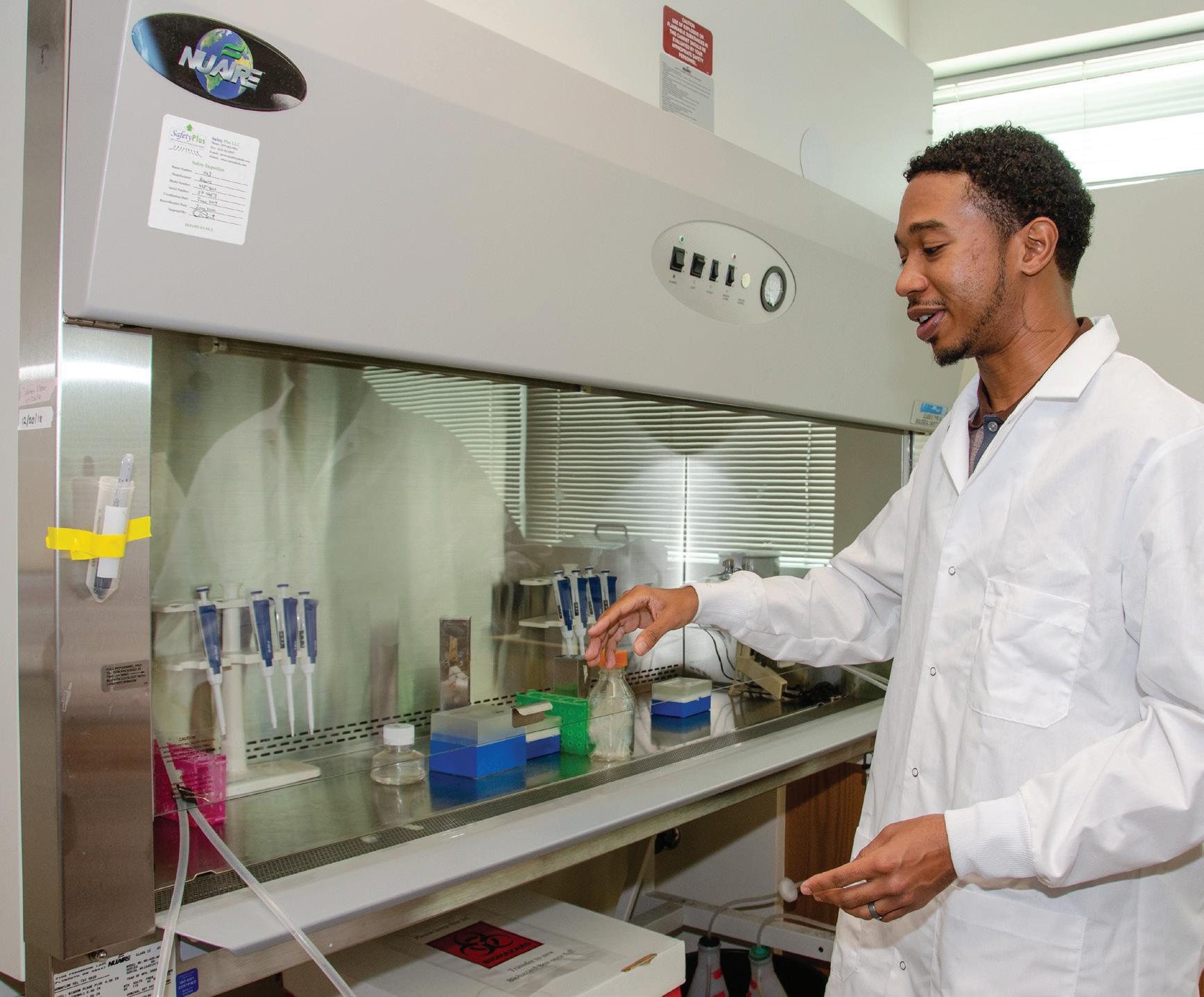


CB Lab
Cellular Biomechanics Lab

Led by: Robert Steward, Ph.D.
Research happens at the microscopic level in the Cellular Biomechanics Lab. Robert Steward and his research team cross the bridge between mechanical engineering and medicine by studying the mechanical forces that play a role in human health.
Through a grant from the National Institutes of Health, Steward studies the role that endothelial cells — and the mechanical forces they respond to — play in the early stages of cardiovascular disease. He and his team also investigate diabetes and how cells behave in a high glucose environment.
13



CB Lab
Computational Biomechanics Lab
Led
by: Luigi Perotti, Ph.D.
Millions of patients in the U.S. are affected by cardiac diseases. However, common strategies to evaluate cardiac health often rely on inadequate measures. In addition, the motion of the heart across scales is still poorly described. These issues limit our understanding of heart function and our ability to diagnose and monitor cardiac diseases.

In the Computational Biomechanics Lab, Assistant Professor Luigi Perotti and his research team strive to better understand cardiac function and dysfunction. They combine MRI anatomical, microstructural and motion data with computational mechanics to build models that allow them to study cardiac kinematics, mechanics and electrophysiology.
Perotti’s goal is to identify measures of the heart’s motion and microstructure, which may serve as biomarkers to detect the onset and progression of cardiac diseases. He and his team focus on computing measures of cardiac deformation that can be estimated from imaging data routinely acquired in the clinic and using fast and robust algorithms. They also develop multiscale and multiphysics models to better understand cardiac mechanics in health and disease and better interpret motion imaging data. These research efforts are currently supported by two awards from the National Science Foundation.
Through the use of the same theoretical and modeling tools of continuum and computational mechanics, Perotti also studies the assembly and maturation of viral capsids and the packing of colloidal particles on 3D surfaces. The end goal is to eventually design bio-inspired deployable, self-morphing, thin-shell structures.
15
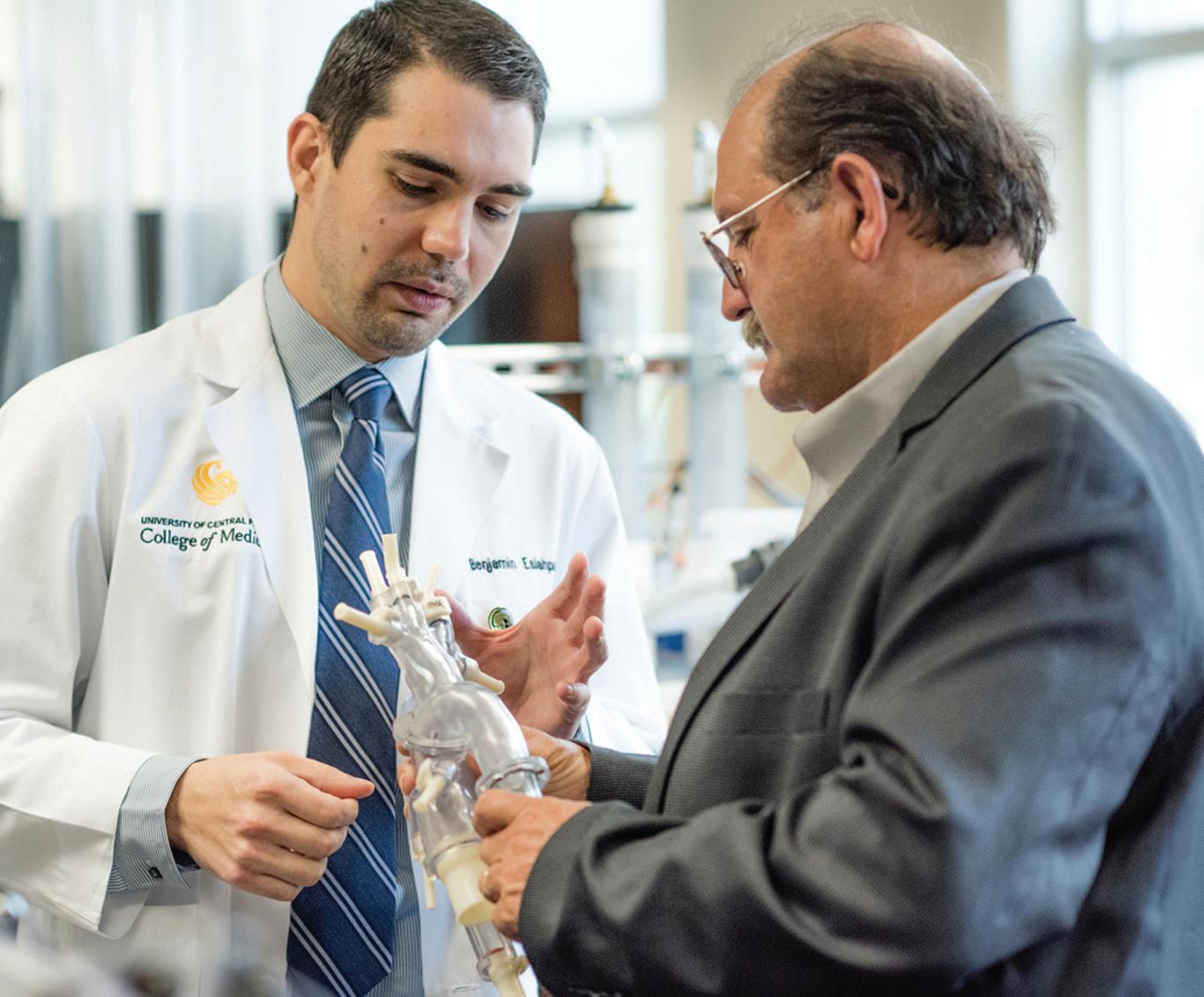


CML Lab

Computational Mechanics Lab
Led by: Alain Kassab, Ph.D.
Alain Kassab currently leads a three-year study under the support of American Heart Association Transformative Grant that is utilizing multi-scale computational fluid dynamics modeling to investigate a novel surgical manoeuver aimed at reducing stroke risk in left ventricular assist devices by tailoring the outflow graft implantation. Over the past 10 years, his research group has been engaged in a general program bridging engineering and medicine by utilizing computational modeling to aid in treatment planning of congenital heart disease. These studies include the investigation of the hemodynamics of a novel hybrid approach to the comprehensive stage II operation for single ventricle, the design of a self-powered Fontan circulation, and the detailed hemodynamics resulting from a range of placement of shunts and varying diameters in the hybrid Norwood palliation of single ventricle congenital heart disease.
17


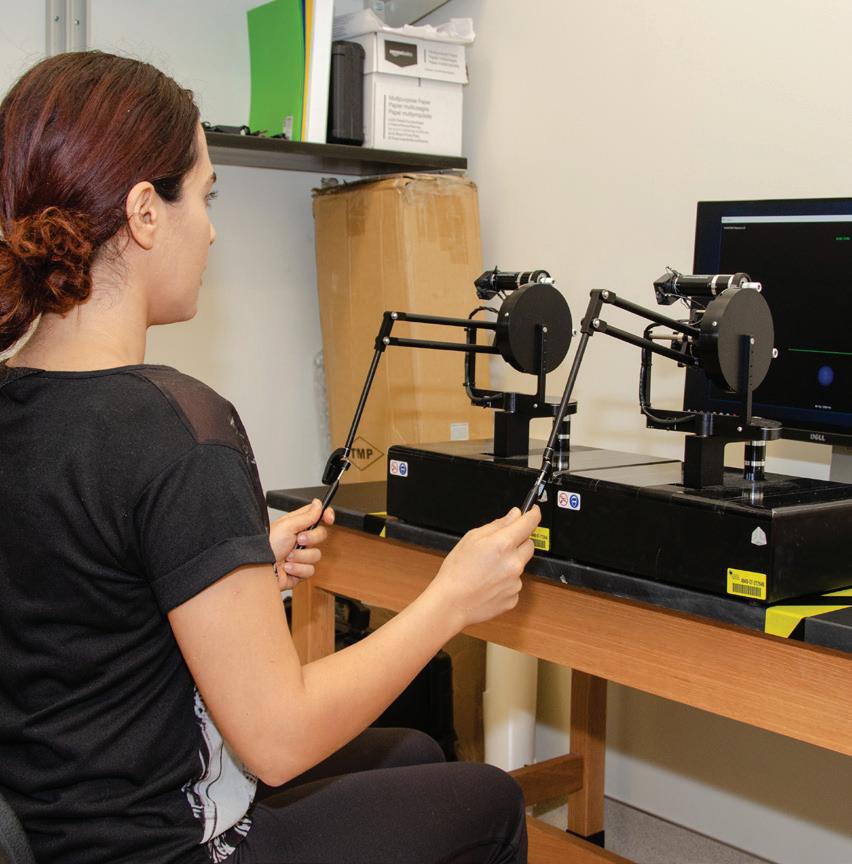
NMS Lab
NeuroMechanical Systems Lab
Led by: Qiushi Fu, Ph.D.
When you pick up a pen or grab a water bottle, it may seem like a simple task. But the dexterity of the human hand is more complex than you think.
In the NeuroMechanical Systems Lab, Qiushi Fu and his research team study the chain of command between the brain and the hand, with a specific focus on rehabilitation and prosthetics for those with impaired manual functions.
Through experiments that combine virtual reality, motion capture and robotics techniques, Fu measures neural signals through electromyography and electroencephalography, generated when the hands grasp and manipulate objects.
This data can be used to uncover neural mechanisms underlying sensorimotor dexterity, which provides the scientific basis for fine-tuning prosthetics and creating rehabilitative robotic devices that allow patients to bolster their manual skills.

19
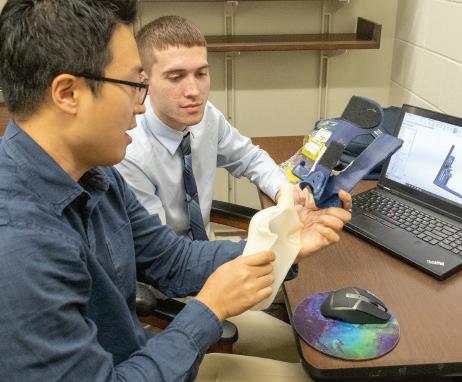


REAL Lab
Rehabilitation Engineering and Assistive Device Lab
Led by: Hwan Choi, Ph.D.
When it comes to assistive devices, such as prosthetics and orthotic devices, Assistant Professor Hwan Choi has a different philosophy than most researchers. He believes that they not only improve walking function, but they can provide muscle rehabilitation through daily living as well.
This philosophy drives Choi’s work in the REAL Lab, where he develops devices that can serve both functions. His real-time variable stiffness module give prosthetics a greater range of flexibility and comfort by accounting for factors such as weight, muscle strength and walking patterns.
A second device, the real-time variable timing module, captures and releases stored energy at the appropriate time to allow amputees to propel themselves forward more easily. Both devices are designed to be affordable and to fit on any existing ankle prosthesis, eliminating the need to buy a larger, more expensive device.
Choi is a member of the Biionix Faculty Initiative Cluster, which brings together faculty with engineering, science and medical backgrounds to develop novel technologies that can be used to manufacture prosthetics. In collaboration with Melanie Coathrup, the director of the Biionix cluster, he conducts research on osseointegration, a surgical procedure that integrates the prosthetic with the bone. His long-term research goal is to figure out how to minimize the negative effects of this new type of surgery.

21
25 FOR MORE INFORMATION: MAE.UCF.EDU MAEADVISING@UCF.EDU 407.823.2416 UNIVERSITY OF CENTRAL FLORIDA DEPARTMENT OF MECHANICAL AND AEROSPACE ENGINEERING COLLEGE OF ENGINEERING AND COMPUTER SCIENCE
BOX 62450
FLORIDA 32816-2450
P.O.
ORLANDO,






























